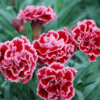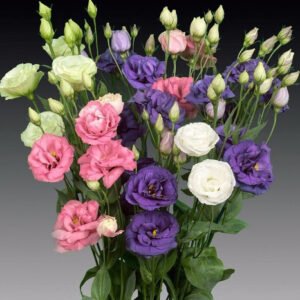The name chrysanthemum comes from the Greek words meaning ‘gold flower’ and from the Chinese name for them – mums. Many people call chrysanthemums ‘pot mums’. Originating in China, they were taken to Japan round 1500 years ago and then entered Europe in the eighteenth century.
Description
Chrysanthemums are available in the variety of shapes and sizes and the flowers differ between species. Although originally chrysanthemums were small yellow flowers, they are now available as whites, pinks, purples, greens, reds and many other colors. The flowers themselves can be ball or globe shaped, daisy-shaped or even button-shaped.
Habitat
Chrysanthemums still grow wild in China and other Far East countries in a variety of habitats, including grasslands, mountain slopes, riversides, fields, and seashores. Many chrysanthemums are now cultivated because of the demand.
Availability
They are usually cultivated from cuttings or seeds planted in spring and are often available until late summer and early autumn.
Species
There are around 30 species of chrysanthemums in the Asteraceae family. There are many hybrids and cultivars available. C.morifolium is a hardy variety, available in many colors and is popular in gardens.
Care Tips
As a rule, chrysanthemums are generally easy to grow and care for. They can grow in a wide range of soils, as long as it is free draining. Sunny or semi-shaded locations are suitable, although those that grow in the shade will probably flower later in the autumn.
Many gardeners recommend that chrysanthemums be pinched out to maintain a bushy form. Pinching out should be done mid-spring to early summer. You should pinch out the tip when growing. As the plant reaches around six inches in height, you can then pinch out the side branches.
You may need to stake your plants against winds and, although most varieties are hardy, some may need protecting over the winter if they are tender.










Reviews
There are no reviews yet.